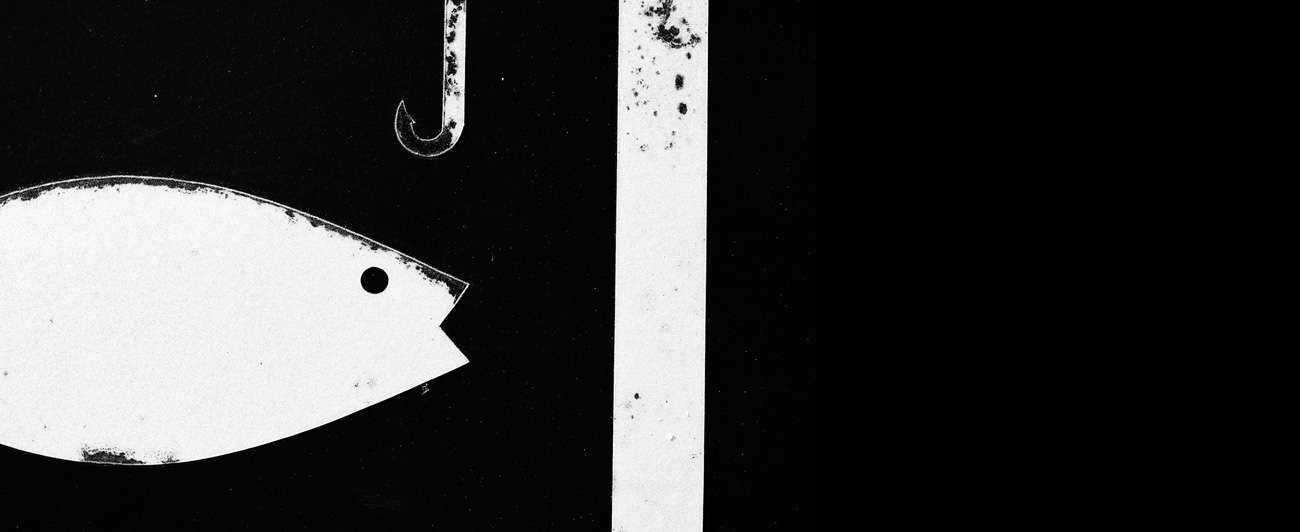Open Water
100 Words or Less
Last Fish Before Corona
One thing that probably won’t change much is the simple act of catching—or trying to catch—a fish. Here, for the sake of posterity are stories from The Flyfish Journal contributors about the last fish they caught before Corona upended our lives—all in (about) 100 Words or Less.
Words: Cameron K. Scott, poet, teacher, author of “Watershed”
Steelhead numbers were dismal this year. Every friend I stopped and chatted with on the bumpy-ass dirt road that runs along a favorite river said, “Good luck, they aren’t here.” Best case was a steelhead hooked by a gearhead four days prior. Worst case was driving home with two buddies I hadn’t seen for 20 years without any steel. Rivers on the rise. Gas tanks running flat. But then it happens. (Doesn’t it always?) On a corner-pocket, giant-mend, reach and bounce against the opposite bank kind of hole, there she was, a beautiful wild hen cartwheeling through the air. Always, this sustenance of water and fish slipping through hands.
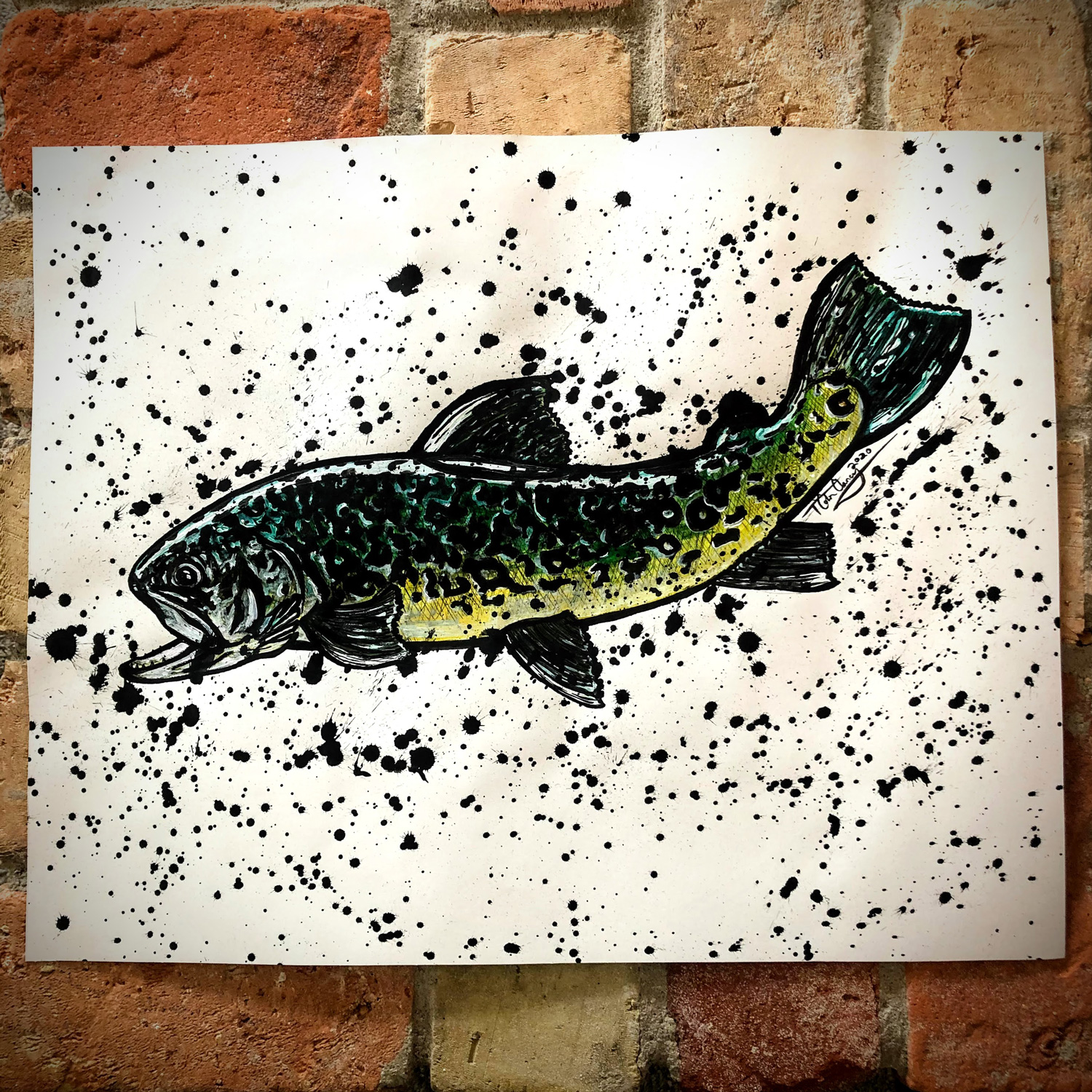
ABOVE Days on the water often inspire us long after they’ve ended; even small 8-inch tiger trout are worthy of remembrance. Artwork: Colin Clancy
Words: Colin Clancy, Associate Editor, The Flyfish Journal
I’d been cutting firewood and had a truck full of logs and my dog on the bench seat next to me. I hadn’t planned to fish, but sunset was still 20 minutes off when I passed the lake. Daisy didn’t want to leave the heated truck but followed me anyway. I cast a streamer, letting it sink for an eight count before stripping line. The fish hit on the third strip and fought hard for a little guy. I held up the 8-inch tiger for Daisy’s approval, brilliant colors of black and gold shining in the evening light.
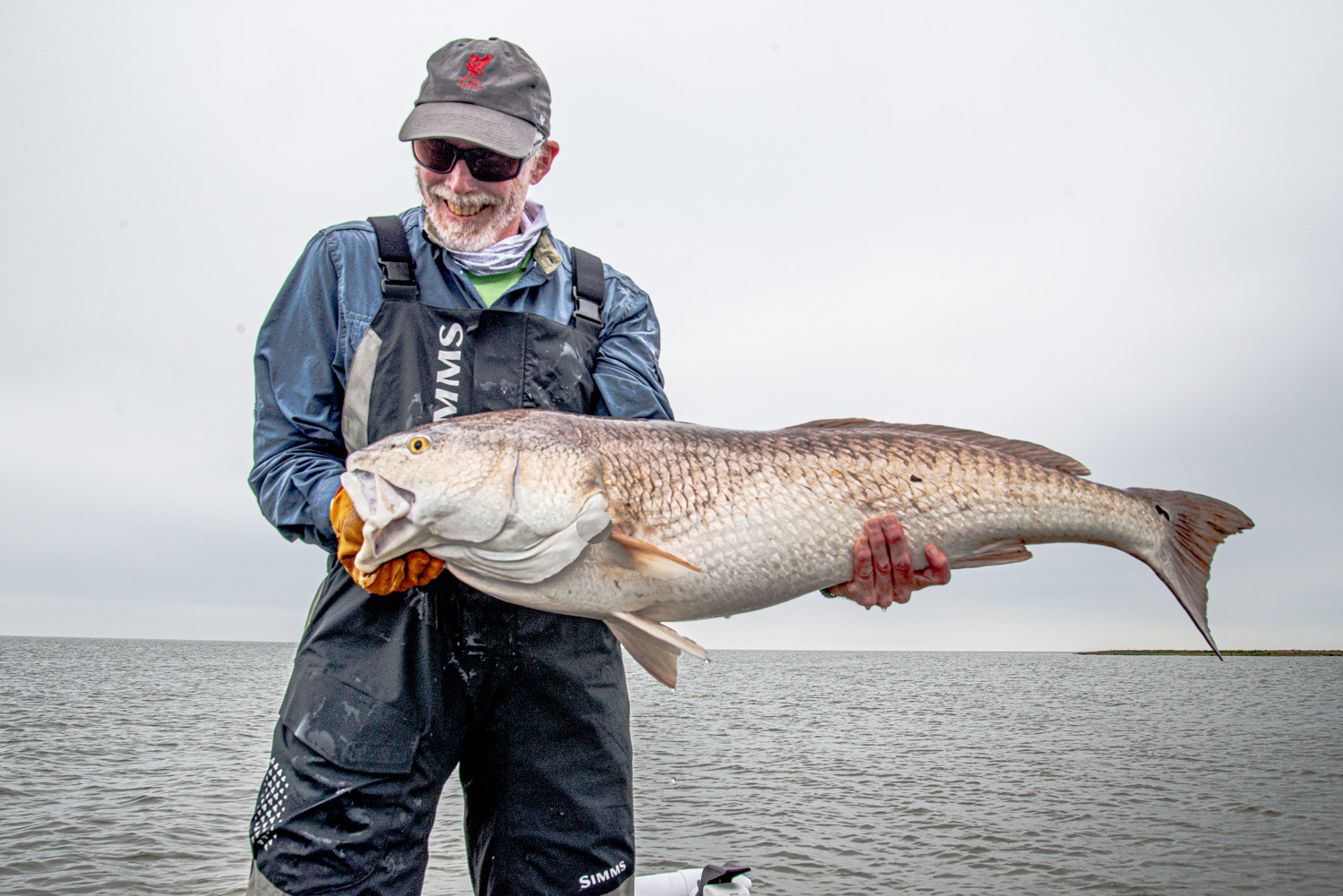
ABOVE Mike Sepelak’s reward for fishing the brown water and never giving up hope. Photo: David Moore
Words: Mike Sepelak, writer, photographer, arbor knot specialist.
The water was the consistency of Yoo-hoo, pushing us to the barrier islands to search the outer edges for tails. It was tough going but occasionally we’d spot a paddle waving down the bank and ease our way to it. Late the last day, stripping through a spot where we thought we’d seen a back, I came tight on something that didn’t budge. Another oyster bed. Shit. But then it started moving casually down the shoreline and just kept going. For the second time in recent memory, I gave some thought to the arbor knot that secured my 200 yards of backing to the spool. Luckily, it didn’t come to that. But it came awfully close.
Words: Will Rice, Creator, writer & host of the Down the Path podcast
The last fish I caught ate Smethurst’s Stone Bomb. There were no rising fish, so I bounced that juicy Plecoptera imitation along the bottom of the river with overblown confidence.
The trout were deep.
But like usual, I became distracted from watching my bobber float and tick between the ice-covered banks. I’m gifted with a short attention span. My gaze strayed. Was that a nose or a fin or just an icy late winter hydraulic?
Hours passed. Fish were caught – including my last one.
And then, for a few fleeting minutes… the fish started chewing bugs on the surface.
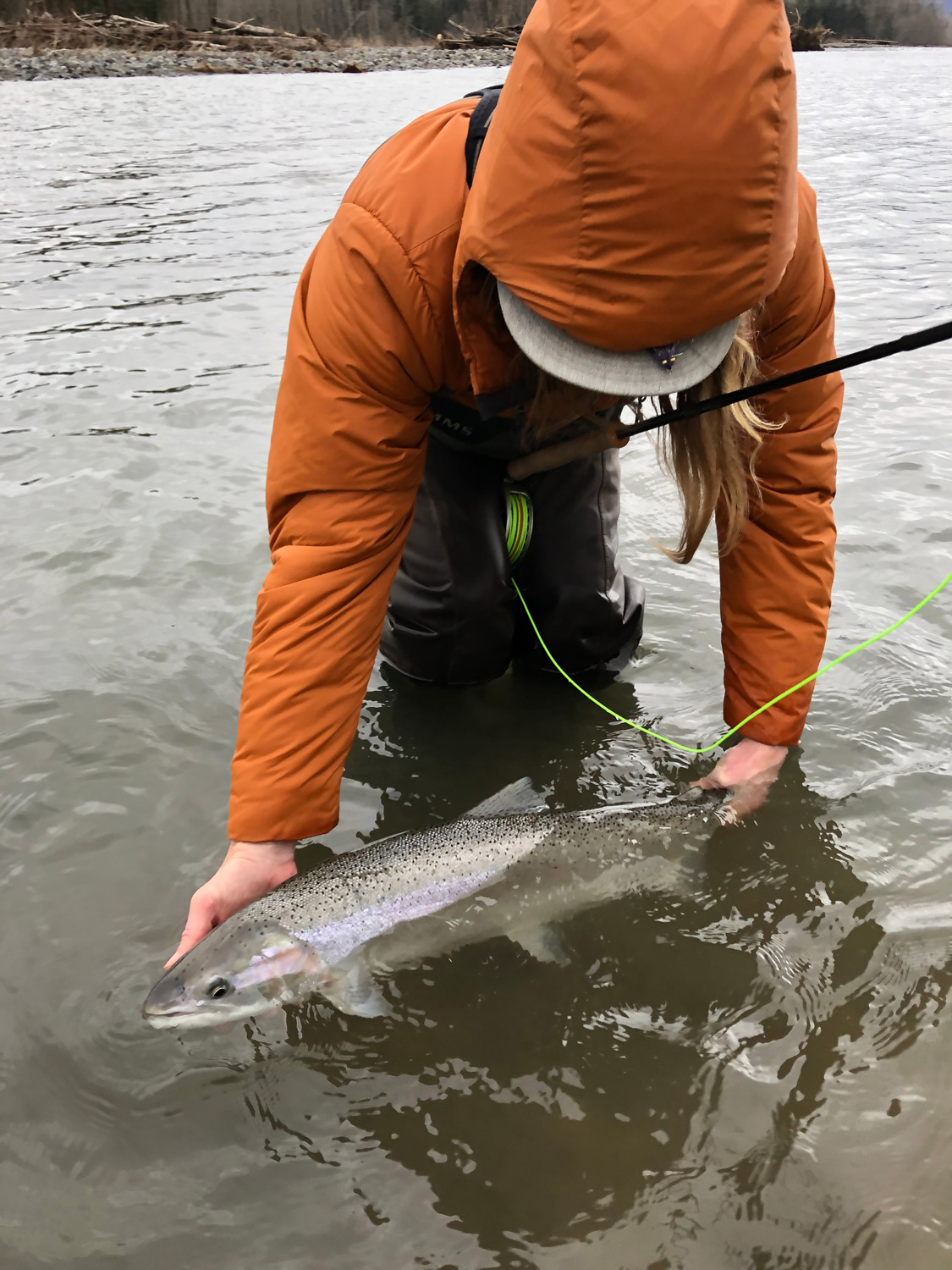
ABOVE Always save your cookie fortunes—you never know when they’ll come true. Photo: Evan Slater
Words: Copi Vojta, who is losing friends over the number of steelhead he caught this winter.
A river I’m still learning. A bushwhack; swampy backchannels and Himalayan blackberry open up to braided mainstem. I am blessed with a textbook run but on the wrong side. I fish and nothing remarkable happens. I return two days later with a friend and we explore and cross; small substrate washes away beneath our feet as we near the far bank. More unknowns open up to a gravel bar and the sweeter river left. One fish grabs and there is no hookup. Another fish grabs and there is a hookup and break-off at our feet. A third fish grabs and sticks and runs and comes to hand and we are in awe of the timing and the day and our fortune cookie at the pizza place four days earlier, which promised: “Your perseverance will pay off soon.”
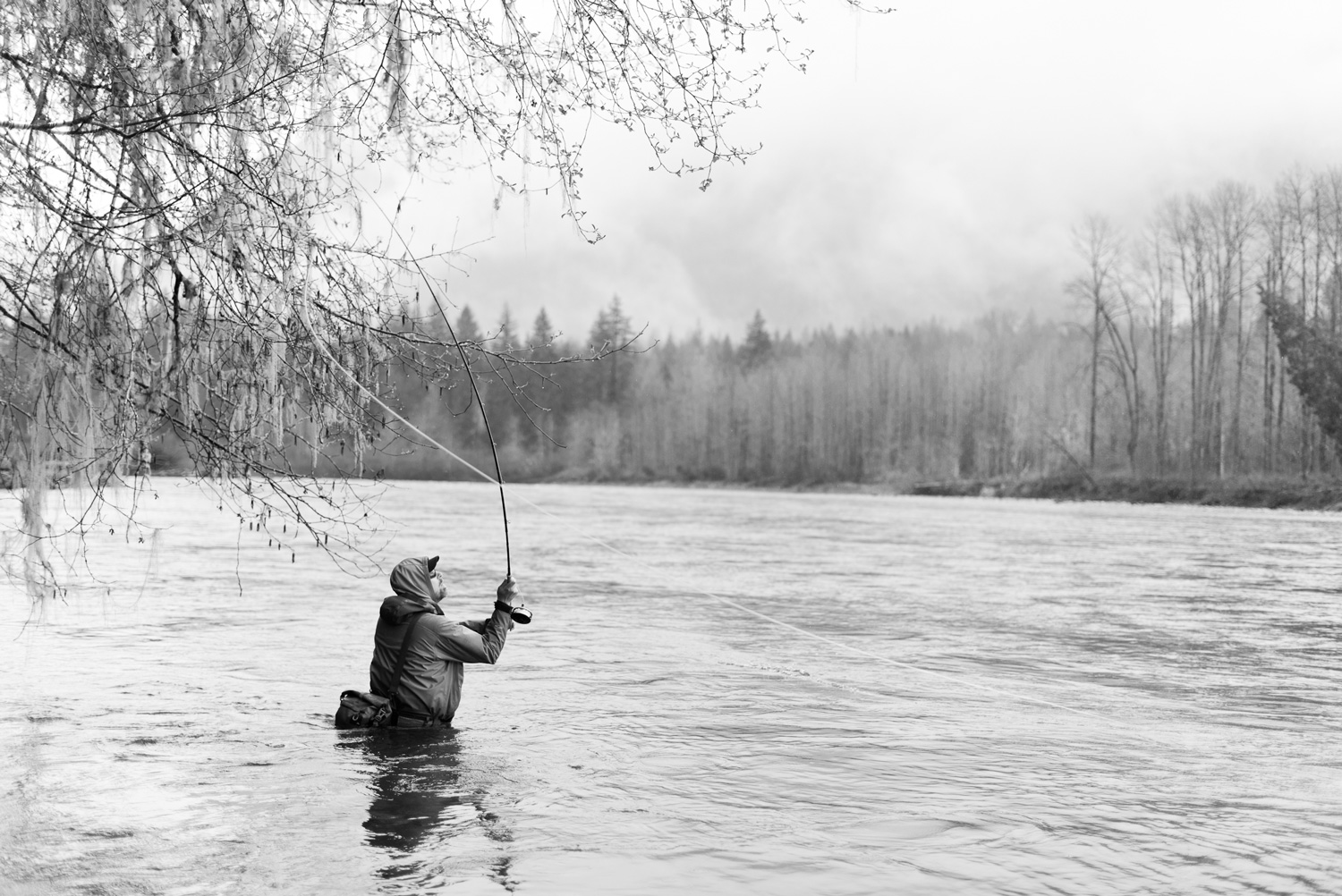
ABOVE Greg Fitz loads up another laser during a steelhead season that ended much better than this year’s. Photo: Copi Vojta
Words: Greg Fitz, who might get angry when he hears how many steelhead you caught on your last outing.
In the cold, stained water, as black and purple marabou slowly crept into the soft water, right where the current slowed and went from knee to waist deep, the line pulled tight. A foot of line cranked off the reel. Stunned out of daydream, I lifted my spey rod abruptly instead of sweeping to the side and swear I felt the hook catch for a moment before the fish dropped the fly and the system went slack. If the steelhead returned to where it was holding, subsequent presentations couldn’t convince it to grab again. That was my winter steelhead season.
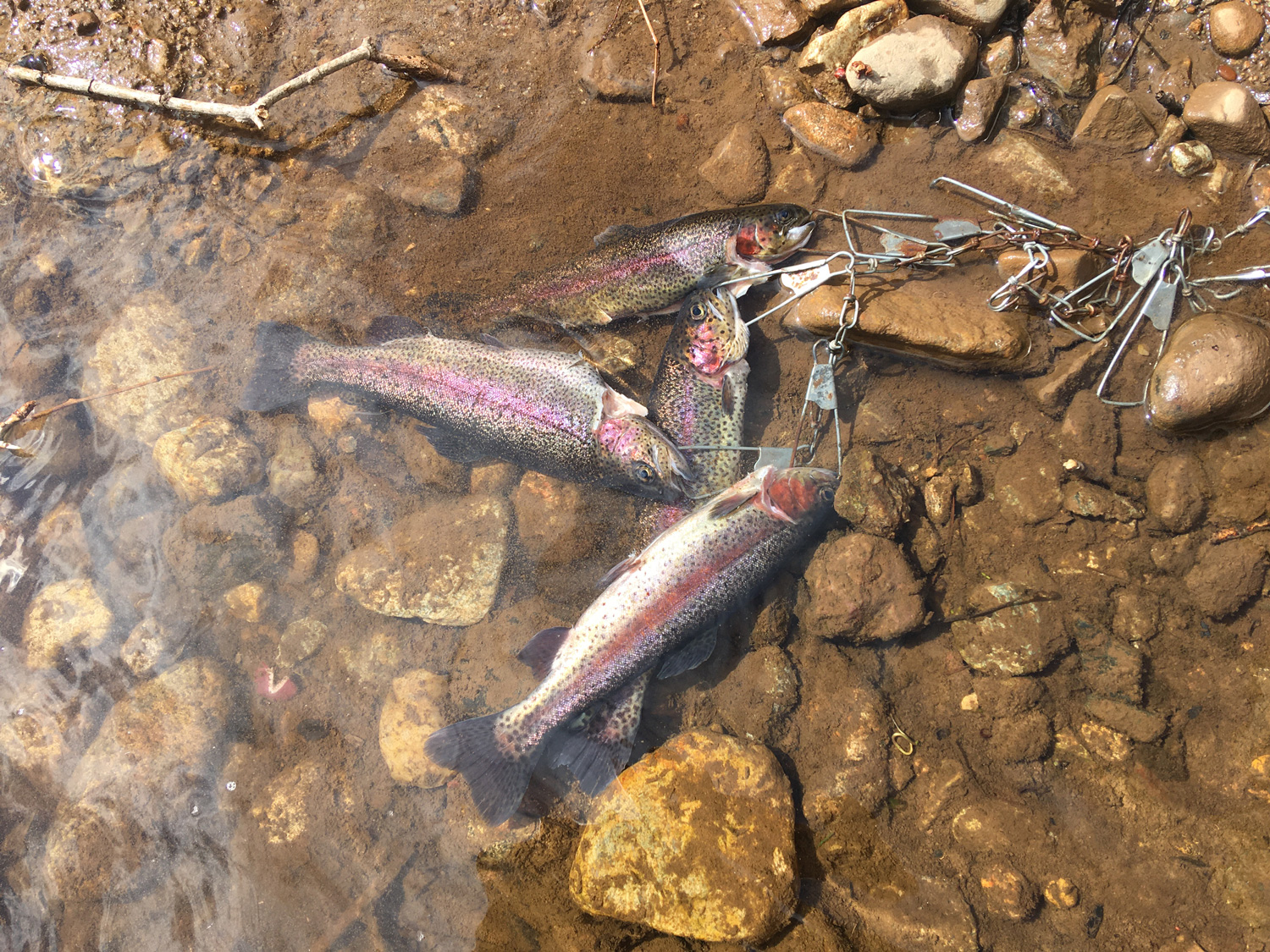
ABOVE All in a day’s work: corn-fed cookie cutter stockers—great fare for the smoker. Photo: Stephen Sautner
Words: Stephen Sautner, author of “A Cast in the Woods”
Trout of the Corn
With a COVID-19 statewide shutdown looming, New Jersey jettisoned this year’s crop of cookie-cutter rainbows several weeks early on streams that normally would have been closed – a wet dream for the meat guys. I had to see for myself, so I ventured out to a nearby creek. Sure enough, each pool boasted its own personal school of rubber trout. I confess I partook, even bringing along a chain stringer so I could smoke ‘em if I got ‘em. And I got ‘em – my four-trout limit came easily. When I gutted each fish, its stomach bulged with corn, courtesy of some bait guys fishing just upstream of me.
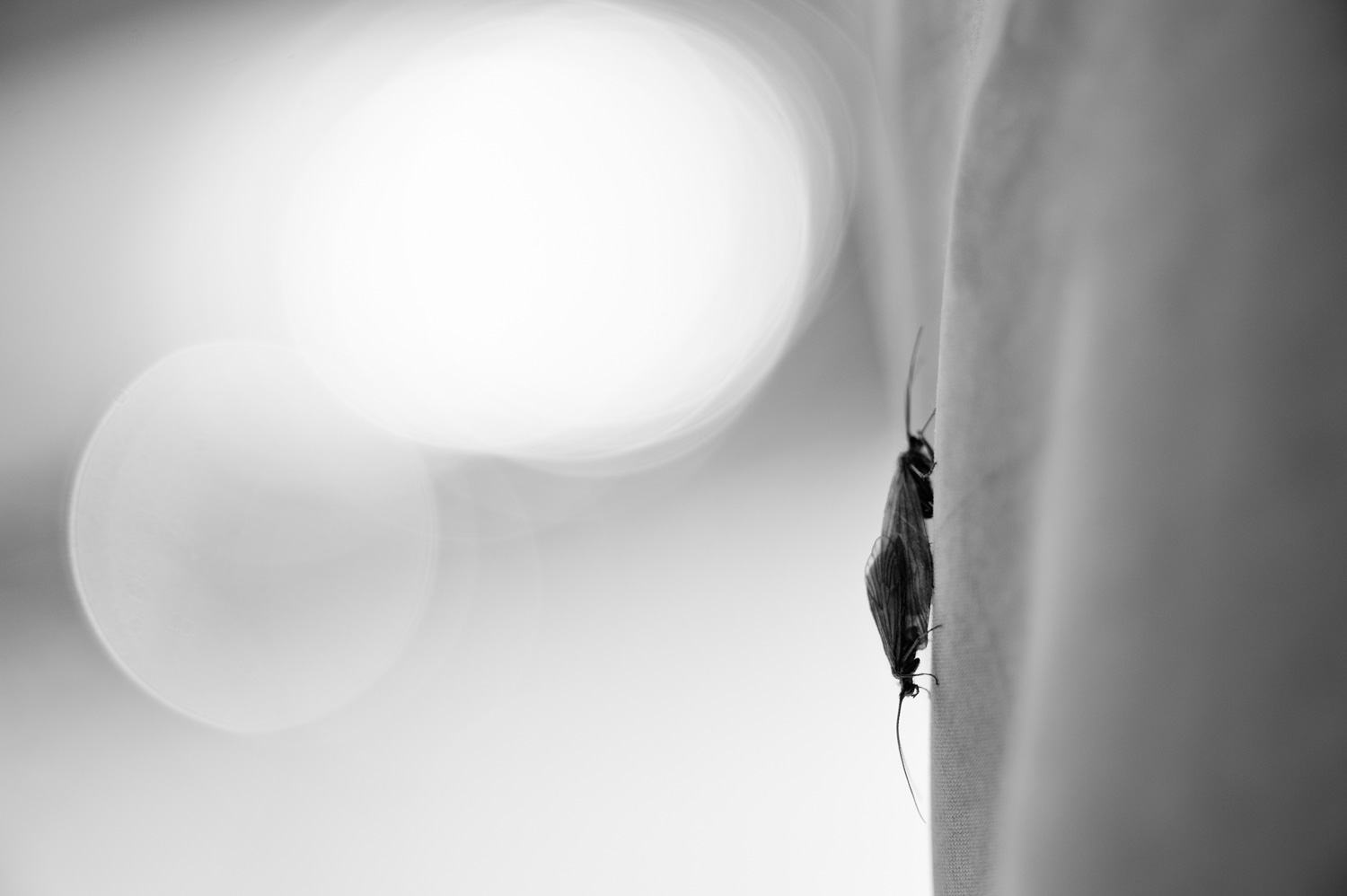
ABOVE Two caddis flies doing what two caddies flies do to ensure next year’s caddis flies can do what they do. Photo: Copi Vojta
Words: Noah Davis, writer, author of “Other Kindnesses” from TFFJ 11.2.
My caddis keeps pace with the leaf of ice following the line of the riffle.
I can’t see into the dark, winter water if the brook trout shifts from beneath the frozen film or from the bells dangling off the roots of the maple on the bank.
Either way, this is a trout sheltered by ice, making his rising to my caddis in this shaded bend of the hollow that much more miraculous.
Which every trout is in winter.
Which every trout should always be.
The orange on his belly is the only warm color I’ve seen for hours.
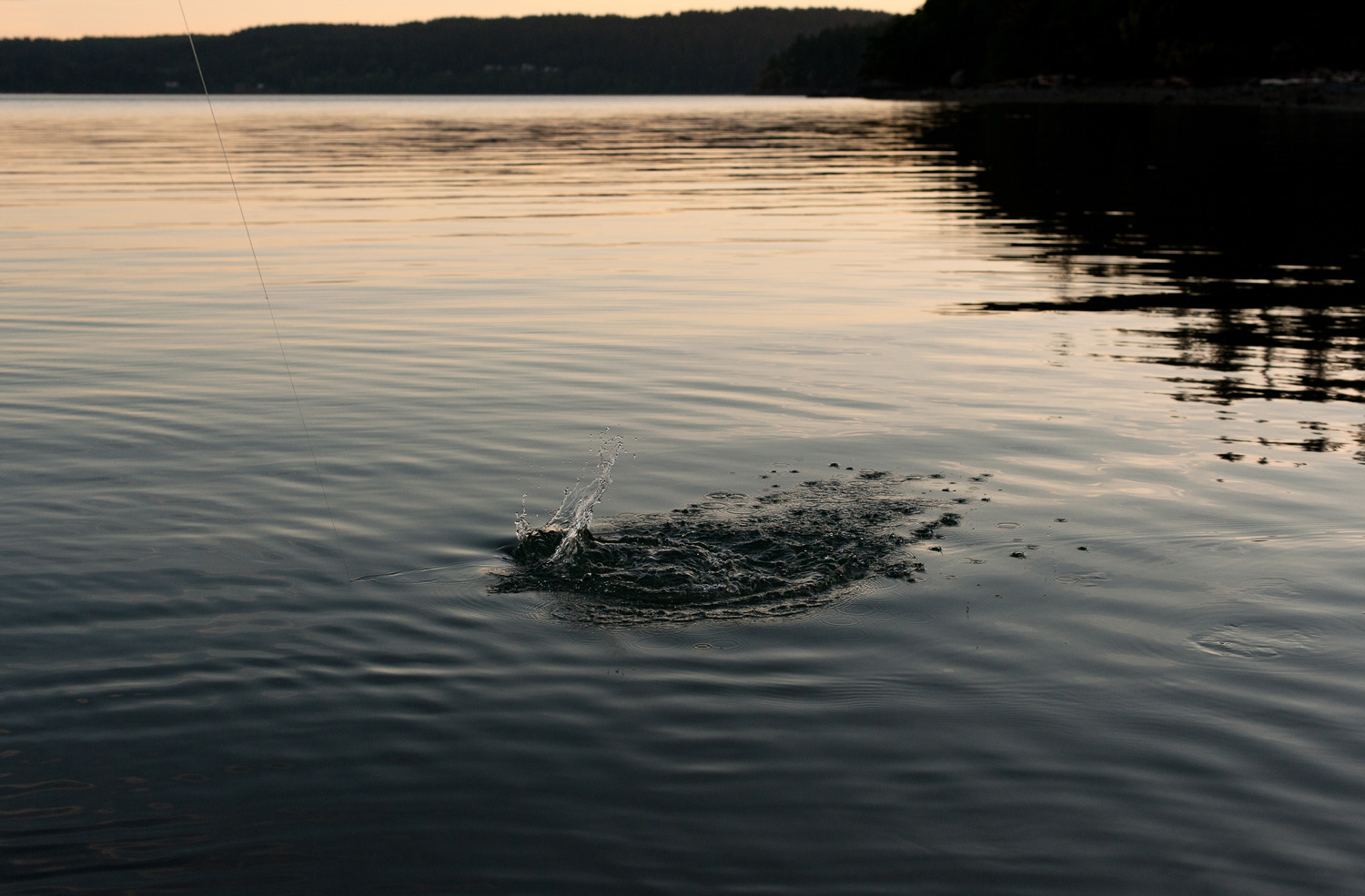
ABOVE Springtime on the Puget Sound is a nice place to be, and it’s even better with a bent rod and a feisty fish. Photo: Copi Vojta
Words: Erin Spaulding, writer, author of “Bluegill Tallies” from TFFJ 10.4.
I tie on a copper baitfish because it’s March and South Puget Sound is swelling with searun cutthroat looking to fill their bellies with chum fry. Between fits of wind and rain, pockets of calm and sunshine produce better casts and expectations.
Stripping through the quiet amplifies anticipation. I feel the window closing—because the wind will kick back up and within days I may be sheltered in place.
I feel the strike.
Tip up, line taught, fish splashing. We work against each other and I’m grateful for the connection, albeit briefly because it’s off already; and even now, as I sit here at home in late March, waiting, I still don’t know whether it was a cutthroat or a Coho. And for that, I’m grateful.
Words: Alex Collier, writer and photographer.
We’ve had a fishless day on a notoriously fickle stretch of river.
On the last stretch before heading home, tight to the far bank a fish rises.
Cast… Drift…
Hard grab, solid weight on the line; yell to my buddy downstream, line goes slack after a big roll.
“Looked like a good one,” he yells. “What’d it eat?”
“Lightning Bug,” I respond.
Five minutes later, he yells, rod bent over.
I have the net and sprint down to land a thick rainbow with a Lightning Bug in its mouth. Only fish of the day.
I’ll claim half of it.
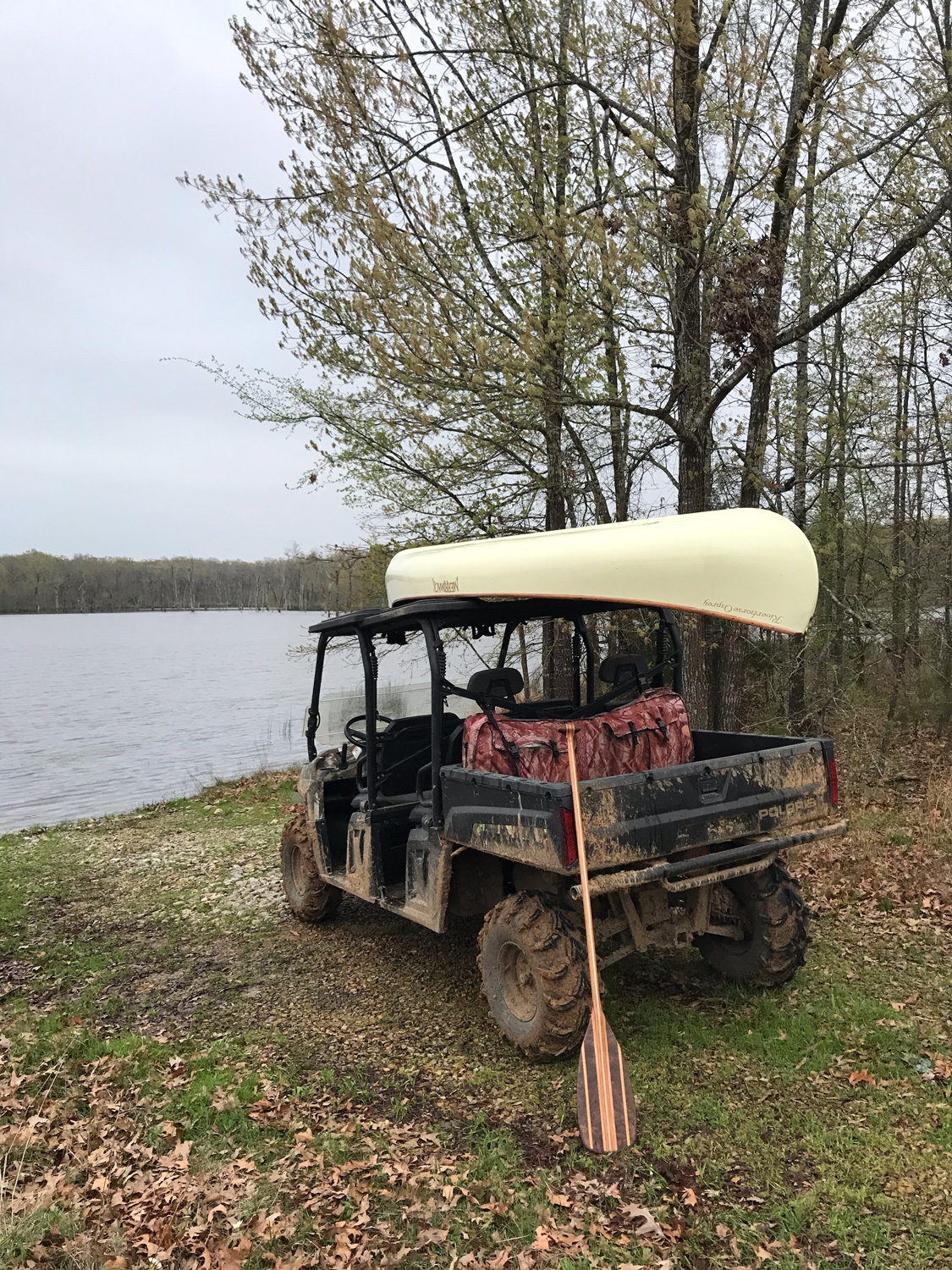
ABOVE Water transportation, Texas style. Photo: Nathaniel Riverhorse Nakadate
Words: Nathaniel Riverhorse Nakadate, adventure journalist, Patagonia Fly Fishing Ambassador, bass whisperer.
Red Dirt Rambler
Buried. Both tires. Texas-Oklahoma border.
I walk out to a local gravel road and ask a farmer for a tow.
His 4×4 gets stuck. So does the next farmer. Phone calls.
The giant red tractor driven by the cowgirl version of Cameron Diaz gets us all to freedom.
Loaner mule to carry the canoe and my gear.
Over the canyon to the lost forest lake.
Deer hair frog. 02. Umpqua.
Endless bass in the rain.
Leftover homemade cake & Shiner beer.
Dusk.
Lightning storms & gales.
15 bucks to the farmer & I get to sleep under the tin shed.
Coyotes howl.
Me too—for joy.
And most importantly,
for bass thumb.
